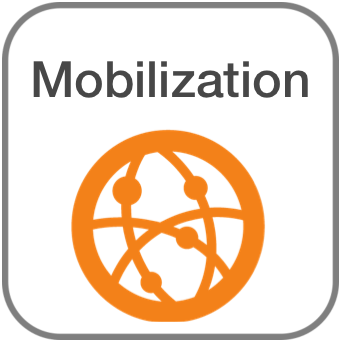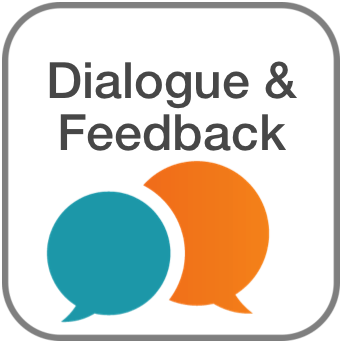 Mobilizing for Change - Youth rally their networks and mobilize others to work together to accomplish civic and political goals.
Mobilizing for Change - Youth rally their networks and mobilize others to work together to accomplish civic and political goals.
Opportunities for youth to mobilize others have also expanded significantly in the digital age. In the past youth had chances to mobilize others through involvement in community-based youth organizations that provide opportunities for youth to organize and mobilize others to bring about change (see reference 1). Today, without any institutional backing, both youth and adults can start a new political group online, write and disseminate an online petition, or raise money for a civic cause via a Kickstarter or other online campaigns.
The accessibility and affordability of online petitions through platforms like Change.org, for example, have resulted in an increase of online petitions, a broader range of issues that are attended to, as well as a shift in who has the power to initiate and control petitions (see 2). For example, in 2011, 22-year old Molly Katchpole posted a petition to Change.org protesting Bank of America’s proposed debit card fee of $5. When over 300,000 people signed the petition and national media coverage turned its attention to the issue, Bank of America withdrew their proposal (see 3).  Analysis of Pew data revealed that 28% of 18-24 year olds were contacted at least occasionally to take an active role in civic or political issues on a social network site (see 4).
Analysis of Pew data revealed that 28% of 18-24 year olds were contacted at least occasionally to take an active role in civic or political issues on a social network site (see 4).
While youth today are increasingly mobilized through networked online spaces like Facebook or Twitter, at times, the credibility of the rationale for action and the sustainability of the plan of action can be problematic (see 5). Thus, educators must not only teach youth how to gain support for a cause through a petition or online fundraising effort, but must also help youth learn to critically examine requests for their support and how to connect efforts, where possible, to institutions and organizations that can help build and sustain powerful coalitions.
EPP Resources with a Mobilizing for Change Focus
- Action Module from the Digital Civics Toolkit for Educators
- Action collection from the Teaching Channel’s Educating for Democracy Deep Dive
- From Theory to Practice: Examples of Digital Media in Civic Education (BYP)
-
The Taking Action Project curriculum, 9th grade, by Jessica Tyson (EDDA)
-
Related Blog Post - Increasing Civic Agency by Jessica Tyson (EDDA)
-
-
Democracy in Action curriculum, 12th grade, by Maryann Wolfe (EDDA)
-
Selected Lessons (GP/FHAO):
For an expanded discussion of this and other EPP practices see:
Redesigning Civic Education for the Digital Age: Participatory Politics and the Pursuit of Democratic Engagement by Joseph Kahne, Erica Hodgin & Elyse Eidman-Aadahl
Mobilizing for Change
| Common Historical Practices | Expanded Practices in the Digital Age | New Opportunities for Youth | Potential Risks | Implications for Educators |
|---|---|---|---|---|
|
Political organizations mobilized large numbers of people around a civic or political cause using their capacity and resources, such as door-to-door canvassing or tapping an organization's membership. |
Social networks can be mobilized without the need for organizational resources. |
Youth have relevant digital skills and capacities that can be turned toward mobilizing others to back a civic or political issue of concern.
|
Requests to get involved can come from individuals and groups that are unknown and potentially untrustworthy. |
Support youth to: Tap social and digital platforms to organize and mobilize others |
|
|
Young people might start a new political group online, write and disseminate an online petition, or raise money for a civic cause via Kickstarter campaign. |
Social networks increase young people's opportunities to be mobilized to respond to an issue by someone they know and trust. |
Complex issues can be misunderstood and/or conflated when information is simplified and shortened to more easily mobilize others (see 6).
|
Determine tactics and strategies for building support |
|
|
|
Youth can take advantage of varying levels of engagement through the fluid and flexible use of digital media. |
Individuals and groups can mobilize around savior-like responses that do not effectively address the complexity of the situation (see 6). |
Identify appropriate and relevant responses based on a nuanced understanding of an issue |
|
|
|
|
|
Anticipate the impact of action, and reflect on possible outcomes and unintended consequences |
For a Printer Friendly version of the above chart, click here: Redesigning Civic Education for the Digital Age - Charts
References
1. Rogers, J., Mediratta, K., & Shah, S. (2012). Building power, learning democracy: Youth organizing as a site of civic development. Review of Research in Education, 36(43). doi: 10.3102/0091732X11422328
2. Earl, J., Kimport, K., Prieto, G., Rush, C., & Reynoso, K. (2010). Changing the world one webpage at a time: Conceptualizing and explaining Internet activism. Mobilization: An International Journal, 15(4), 425–46.
3. Mui, Y. Q. (2012, January 23). Change.org emerges as influential advocate on issues from bullying to bank fees. Washington Post.
4. Smith, A. (2013). Civic engagement in the digital age. Washington, DC: Pew Research Center’s Internet & American Life Project. Retrieved from http://pewinternet.org/Reports/2013/Civic-Engagement.aspx.
5. Ganz, M. (2014, October 17). Why hasn’t ‘big data’ saved democracy? The Nation. Retrieved from http://www.thenation.com/article/182449/why-hasnt-big-data-saved-democracy#.
6. Soep, E. (2014). Participatory politics: Next-generation tactics to remake public spheres. Cambridge, MA: MIT Press. Retrieved from http://ypp.dmlcentral.net/publications/201.










